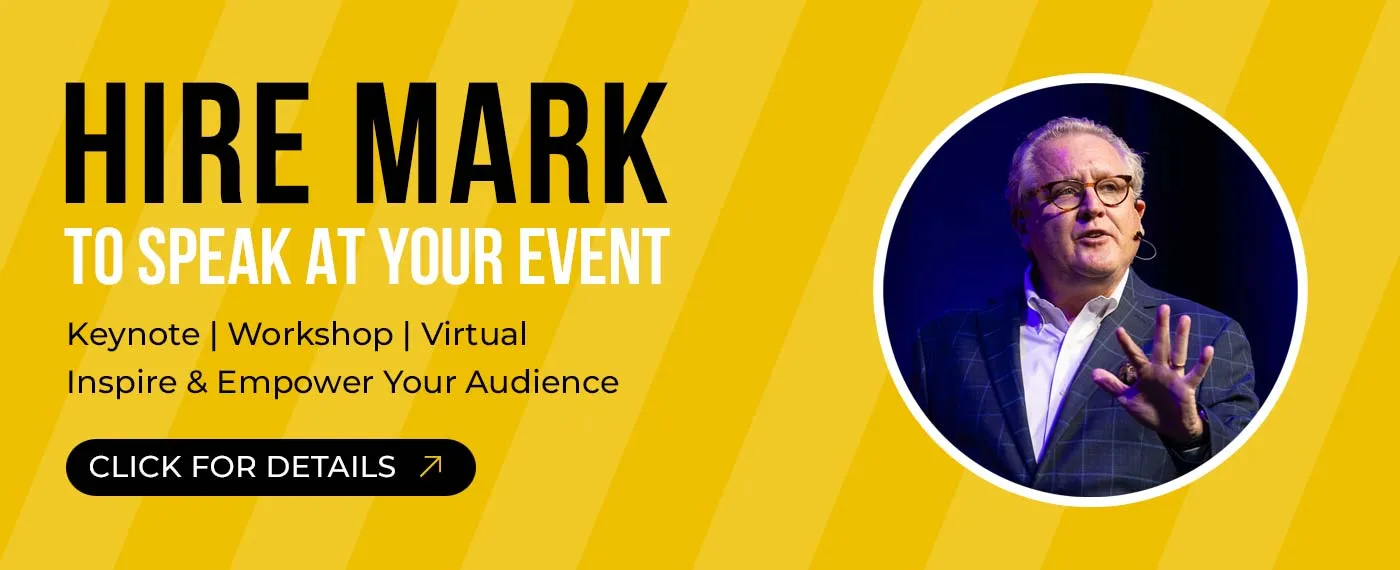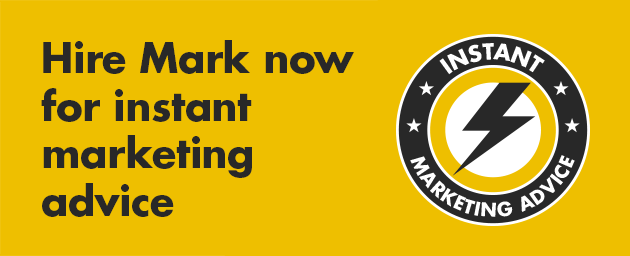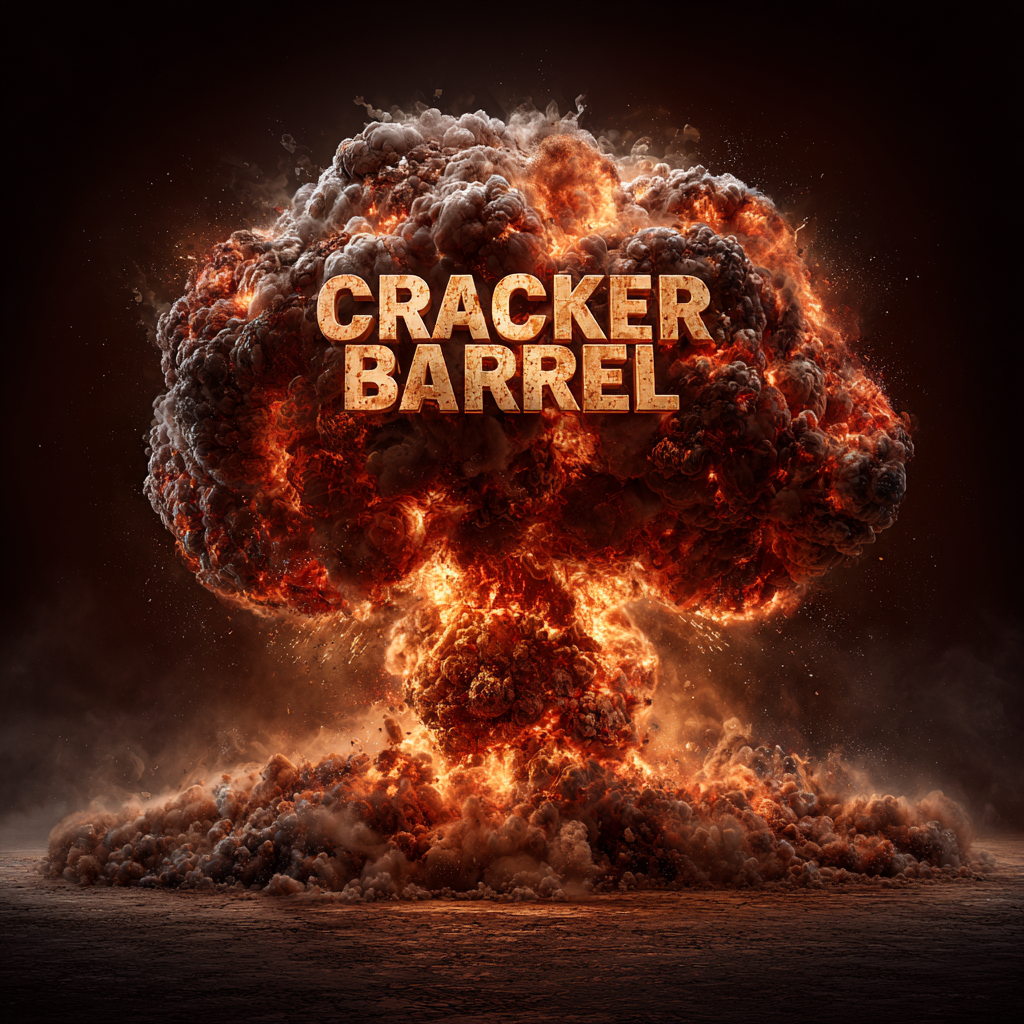
Some mornings, you just want somebody to serve you breakfast.
And on those days, I would drive to Cracker Barrel. Despite the fluffy eggs and smoky sausage, I never felt like I quite belonged in this place of silver-haired “old timers” and boxed sets of The Beverly Hillbillies. But it was close to my house, and I was hungry.
Then a new place opened — First Watch. This restaurant was clean and bright. It offered healthy alternatives as well as creative new options such as lavender pancakes, breakfast cocktails, and the GenZ signature dish, avocado toast. There were no Patsy Cline CD collections. And they leave the coffee pot on the table!
I have not stepped foot inside a Cracker Barrel since.
Apparently, millions of other people made the same choice. Traffic to Cracker Barrel declined by 16% in the last five years.
Something had to change for this brand, and fast. It was time for a refresh … and you probably know what happened next. Chaos.
What can we learn from this fiasco?
I won’t re-hash the debate, but as this unfolded, I couldn’t help but wonder … could a social media brand backlash like this happen to me? Could it happen to you and your company?
What do we need to do so that our own marketing efforts aren’t Cracker Barreled?
Was the backlash even real?
The most visible and public display of the change was a re-branded logo that eliminated the “old timer.”
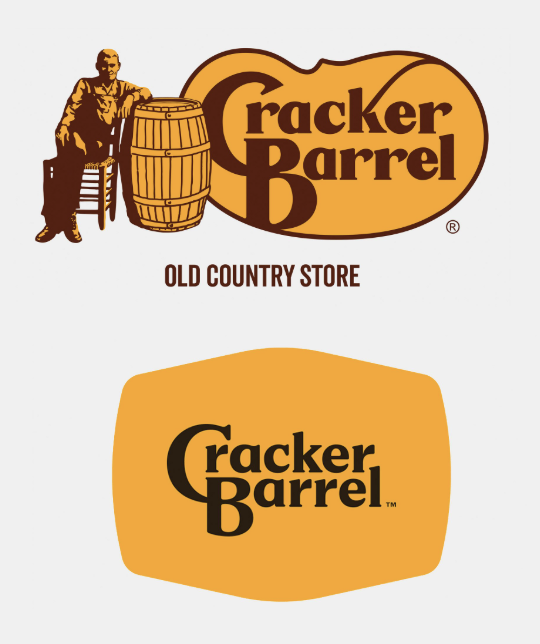
The new logo was part of an effort to reach younger customers with a sleeker, more contemporary look. But this conflicted with the company’s old-fashioned, down-home image.
I thought the design was soulless, but I also approach these things humbly. I assumed this logo was probably the result of millions of dollars of testing and development. I was not in the meetings. There had to be a customer-driven logic here.
 The backlash over the new design was swift and intense. Social and mainstream media lit up with criticism, including commentary that the brand had gone “woke” (more on that later).
The backlash over the new design was swift and intense. Social and mainstream media lit up with criticism, including commentary that the brand had gone “woke” (more on that later).
My first instinct was to feel defensive and support the marketing team. It seems like everything in America is politicized these days. But would real Cracker Barrel customers even notice a logo change?
Research shows that there is almost no correlation between true public opinion and social media sentiment — a small number of angry people with large audiences can hijack the conversation and make it seem bigger than it is. Are the online critics even Cracker Barrel customers?
According to Cyabra, a social analytics firm that specializes in detecting coordinated inauthentic behavior, 21% of the outrage was generated by fake accounts and artificial amplification.
These weren’t throwaway spam bots. They were sophisticated actors creating 916 coordinated content units that reached “more than 4.4 million potential views.”
Despite being artificial, Cyabra found a measurable real-world impact. The manufactured posts generated more than 3,000 genuine engagements, peaking August 22 — coinciding with a 10.5% drop in Cracker Barrel’s stock, much of it triggered by signals that never represented genuine community sentiment in the first place.
When the backlash came, I hoped Cracker Barrel would remain steadfast and see the thing through.
I recalled a similar outcry — the famous Nike brand partnership with Colin Kaepernick. Some people were so angry that they burned Nike gear in the streets! However, the company stood by its position, and the stock price soared within a week.
Cracker Barrel should stay the course, right?
How to avoid being Cracker Barreled
As the backlash intensified (including a tweet from Donald Trump), Cracker Barrel reversed its logo rebrand and returned to its original emblem.
Had a political agenda defeated a rational marketing strategy?
Does this mean we abandon solid business priorities when Twitter runs hot?
Could any well-meaning, professional marketer be Cracker Barreled?
We need to examine the entire story. Information began to seep out that there was inadequate research behind the rebranding. The company cut corners by moving to creative before a thorough market analysis.
They committed the great marketing sin: Creative before strategy.
Polling showed that three-quarters of Americans preferred the old design, with only 23% viewing the rebrand positively. That should have been evident in the research before the rebrand. But there was no research.
What was different about the Nike example? Nike had extensive research on the values and priorities of its customers. Aligning with the controversial quarterback made sense. The company knew there would be a backlash — and they accounted for it. But the people who complained were not their core customers. Nike held the course and accomplished a great marketing success.
The Cracker Barrel debacle serves as a poignant reminder of a fundamental lesson in Marketing 101: Strategy begins with research.
Commit to research
There are no guarantees in marketing. But if there’s one thing we can control, it’s whether our big bets are informed by reality or driven by guesswork and emotions.
Research isn’t just a line item in a budget. It’s marketing insurance. Cracker Barrel cut corners and went straight to creative. Nike didn’t.
And for a big bet like this, research has to be something more than polling or running a focus group. Great research is multi-layered:
- Quantitative data — surveys, polling, and yes, even new synthetic AI-generated panels that can test ideas in hours.
- Qualitative insight — focus groups, interviews, or just observing how real people interact with your product in the wild.
- Cultural listening — paying attention to the broader conversations, memes, and movements that shape how people interpret your brand.
Starbucks doesn’t guess on something as small as cup designs. They study cultural shifts related to sustainability, digital convenience, and identity before taking action.
Doritos ran a campaign stripping its logo from packaging/ads, betting people would recognize them anyway. They validated the idea through brand recognition studies and social listening before going public.
Chipotle monitored viral TikTok “menu hacks” (like the quesadilla + vinaigrette combo) and tested them in small pilots. Basically, this was free R&D that shaped product decisions.
Treat every decision — a new logo, a pricing change, a product feature — as a hypothesis. Test it before you scale it.
Why didn’t Cracker Barrel pilot the idea first? Brand arrogance.
Wokification
If Cracker Barrel had robust research that supported the rebranding decision, would it have made a difference? I’m not sure.
The lack of research was only part of the story.
Much of the social media backlash centered on the opinion that the Cracker Barrel CEO was a “woke woman.” When the attack takes that ugly, polarizing direction, reason and data don’t make a difference.
Christopher Rufo, a right-wing activist, posted on X: “It’s not about this particular restaurant chain — who cares — but about creating massive pressure against companies that are considering any move that might appear to be ‘wokification.’”
The logo commentary was unhinged. Sean Davis, the chief executive of The Federalist, a right-wing website, wrote, “Cracker Barrel’s CEO and leadership clearly hate the company’s customers and see their mission as re-educating them with the principles of gay race communism.”
In what universe is a boring logo and new menu items a manifesto for gay race communism?
And if you followed this story, you’ll know that the president eventually weighed in.
Even if your research is sound, will a board of directors support your rebrand when the president of the United States piles on with negative tweets?
The new layer of fear
It’s impossible to know, but I don’t think any amount of research could have prevented the political backlash. It was a slow news cycle. The activists smelled blood and needed to stay in the culture wars spotlight.
Cracker Barrel messed up, but it didn’t deserve that level of hate. An interesting thought experiment: Could the highly successful Nike campaign be successful in this political climate?
For me, this incident highlights a new layer of fear in the marketing world. In my recent book Audacious: How Humans Win in an AI Marketing World, I named “fear” as the biggest reason why most marketing is boring.
We play it safe and create boring work because of fear.
Fear of upsetting a customer.
Fear of a reaction from the legal department.
Fear of being ridiculed.
Fear of losing your job.
Fear of being the next Cracker Barrel.
We’re no longer in a comfortable world where a brand is what you say it is. The brand is defined by what others say it is. Including the social media rabble rousers. Including influencers trying to catch the wave of public opinion. Including the president.
The enigma is, “safe” is lousy marketing. “Safe” is ignorable.
The surest way to avoid being Cracker Barreled is to realize that your customers are the strategy. Start with research and, like Nike, make sure your leadership team is on board with the risks.
Research and organizational alignment don’t eliminate political risk, but they ensure you’re betting with data, reason, and a defensible strategy on your side.
Before you redesign, research. Before you publish, pilot. Before you fold, fight.
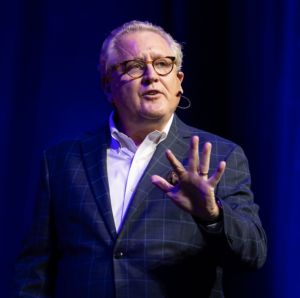 Need a keynote speaker? Mark Schaefer is the most trusted voice in marketing. Your conference guests will buzz about his insights long after your event! Mark is the author of some of the world’s bestselling marketing books, a college educator, and an advisor to many of the world’s largest brands. Contact Mark to have him bring a fun, meaningful, and memorable presentation to your company event or conference.
Need a keynote speaker? Mark Schaefer is the most trusted voice in marketing. Your conference guests will buzz about his insights long after your event! Mark is the author of some of the world’s bestselling marketing books, a college educator, and an advisor to many of the world’s largest brands. Contact Mark to have him bring a fun, meaningful, and memorable presentation to your company event or conference.
Follow Mark on Twitter, LinkedIn, YouTube, and Instagram
Illustrations courtesy Mid Journey

